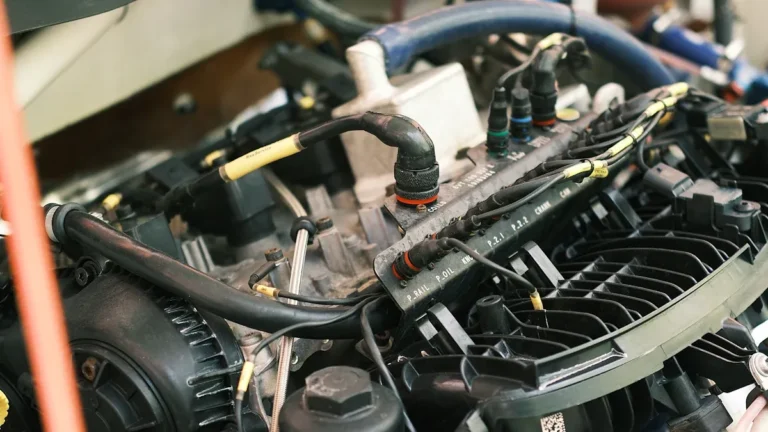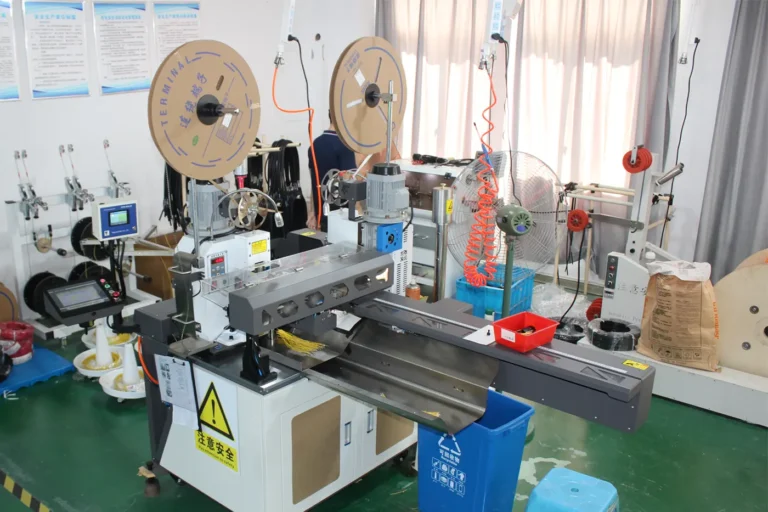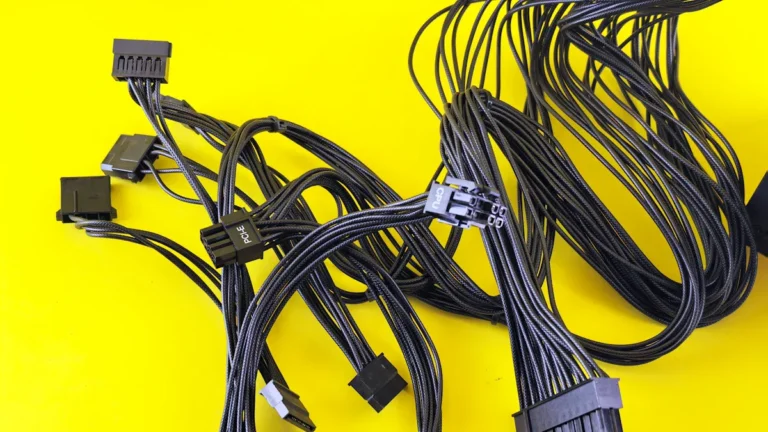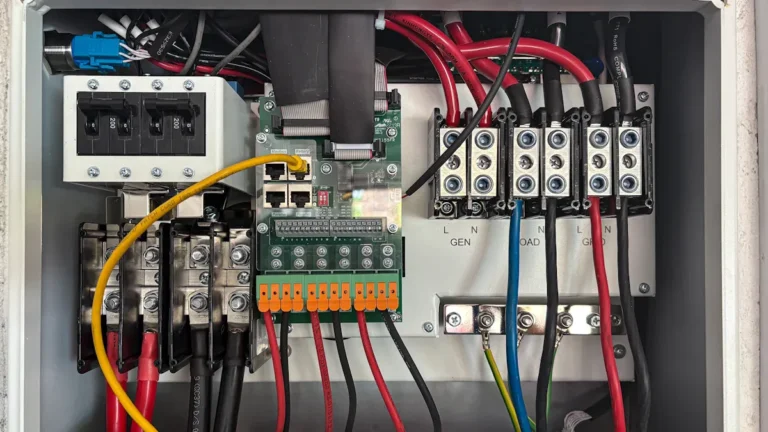Latest EV Wiring Harness Standards for 2025

Manufacturers have new rules for EV wiring harnesses in 2025.
These rules need higher voltage limits and better insulation.
Wires must also be safer from fire.
Electric cars must follow tougher safety rules.
This keeps people safe and cars working well.
Top companies, like Yueqing Chengli Electronic Technology Co., Ltd., help with this.
They make strong products for the EV industry.
This helps electric cars meet world quality standards.
Key Takeaways
The 2025 rules make EV wires safer.
Wires can now handle more voltage and resist fire better.
High-voltage wires must be orange.
This color warns workers and helps stop accidents.
Strong materials like XLPE and silicone rubber are used.
These materials help wires last longer in hard places.
Wires are tested for safety, strength, and reliability.
Smart wiring systems help EVs work better.
Modular wiring makes fixing EVs easier.
2025 EV Wiring Harness Standards

Regulatory Updates
Big changes are coming for car makers in 2025.
New rules tell companies how to make EV wiring harnesses.
Europe now has tougher rules for electronic safety.
These rules stop electric parts from messing with each other.
ISO 26262 asks for better safety in all electric cars.
ISO 6722-1 says wires need stronger covers and heat safety.
In the U.S., high-voltage wires must be orange.
Orange means danger and helps keep workers safe.
The EV wiring harness market is getting bigger.
Experts think it will reach $6.5 billion by 2032.
More people want electric cars, so demand is rising.
New laws and better car tech also help the market grow.
Companies must keep up to stay in business.
Top brands spend money on new ideas and research.
They use lighter parts and smart connectors for safety.
Yueqing Chengli Electronic Technology Co., Ltd. is a leader.
They have ISO 9001, IATF 16949, UL, and CE awards.
These show they care about quality and world standards.
Their products meet the newest rules everywhere.
Key Compliance Requirements
Car makers must follow strict rules for safety and quality.
They need special certificates to prove they follow the rules:
ISO 9001:2015 and IATF 16949:2016 for good work
UL and CE for safe products and selling rights
RoHS and REACH for helping the environment
IPC/WHMA-A-620 and J-STD-001 for building right
Testing is very important for safety.
Each harness gets checked for electricity and strong covers.
They also test if wires can handle pulling and shaking.
Wires are tested in hot, wet, and chemical places.
They power up the system to make sure it works.
Makers send papers with every order.
These papers show tests, certificates, and tracking info.
PPAP and change reports help keep things clear.
EVs need extra safety steps.
High-voltage wires must pass tough tests up to 1000 volts.
Orange wires warn people about danger.
ISO 26262 keeps driver-assist systems safe.
Making products in-house helps companies like Yueqing Chengli.
This way, they meet world rules and make safe products.
Note: Asia-Pacific is the top market for EV harnesses.
Big factories and government help make this possible.
Companies that follow rules and invent new things will lead.
EV Wiring Harnesses: Technical Specs

High-Voltage Design
High-voltage wiring in electric cars uses over 60V DC.
Most cars use 300-500V. Buses can use up to 1200V.
These wires connect batteries, motors, and chargers.
Orange wires show high voltage and warn people.
Special covers stop people from touching live wires.
Strong busbars help wires handle big currents and voltages.
Flexible busbars bend when the car shakes or moves.
This keeps the wires working well.
Crash tests show high-voltage parts need strong covers.
Thick cases and smart wire paths stop fires and shorts.
Rules like ISO 26262 and FMVSS 305 keep cars safe.
hv connectors help wires stay tight under heavy loads.
Materials & Durability
EV wires need to last in tough places.
Covers like XLPE and Silicone Rubber block heat and chemicals.
Tests heat up wires to check if they last a long time.
Both the metal and cover can get old and weak.
Heat and water make the covers break down faster.
Smart computer models help pick the best materials.
Using parts that stretch the same amount stops cracks.
This makes ev wiring harnesses work better for longer.
Testing & Certification
EV wires must pass many safety and strength tests.
HVIL tests check if the circuit is safe.
Pull tests make sure wires do not break easily.
Bigger wires must pass harder pull tests.
Other tests heat and cool wires to see if they last.
Salt spray checks if wires rust.
Fire tests make sure covers do not burn fast.
EMC tests check if wires block unwanted signals.
Rules like ISO 6469, IEC 62196, and ISO 19642 must be met.
hv connectors help wires stay safe during all these tests.
Tip: Passing these tests shows EV wiring harnesses are ready for new electric cars.
Performance & Safety in EVs
Functional Safety
Car makers want to keep drivers and riders safe.
They watch batteries all the time with special tools.
After cars are sold, they keep checking for problems.
This helps find issues early and fix only those cars.
Engineers collect data to spot battery trouble fast.
A 2023 report says EVs catch fire less than gas cars.
Only 0.03% of EVs catch fire, but gas cars are at 1.5%.
Sensors and smart computers check battery health.
These tools help make safety features better.
All these steps keep EV wires safe and working well.
Voltage Drop & Efficiency
Engineers try to make every EV part work better.
They test different converters to keep voltage steady.
QAB converters help when many cars charge together.
New AC/DC converters waste less energy and charge better.
Some stations use solar panels and batteries for power.
Smart controls keep voltage even and stop flicker.
These ideas help EVs charge fast and drive longer.
Good design stops voltage drops that can hurt the car.
Tip: Using hv connectors with thick covers keeps charging safe and efficient.
Fire & Electromagnetic Protection
Fire and electric problems worry EV makers a lot.
Wires get tested with up to 6,000 volts for safety.
Special tests check if wires pick up bad signals.
If wires act like antennas, car computers may fail.
Heat alarms must work right to stop fires.
Rules like CISPR 25 and ISO 11452-1 guide these tests.
All parts get checked to find weak spots.
These steps help stop recalls and keep EVs safe.
Metric / Aspect | Description / Impact |
|---|---|
Tested for how well it works and lasts. | |
Charging Efficiency | Makes sure charging is safe and quick everywhere. |
Powertrain Energy Efficiency | Checks for smooth driving and little energy loss. |
Environmental Durability | Tested in hot, cold, and bumpy places. |
Safety Records | Get better with strong tests and smart design. |
Recall Reduction | Fewer recalls from good checks and safety steps. |
Manufacturing & Innovation
Modular Systems
Modular wiring systems are changing how EVs are built.
These systems use ready-made parts that fit many cars.
Each part must pass hard tests and follow strict rules.
This makes building cars faster and easier for workers.
If one part breaks, workers can swap it out fast.
This saves time and money on repairs.
Modular systems let companies add new tech quickly.
They work with many car models and keep things flexible.
Modular harnesses help make cars faster, better, and follow new rules.
Automation & Quality
Automation is now very important in making wiring harnesses.
Computers help check quality and find problems early.
Machines look for mistakes and fix them fast.
Tests like X-rays and ultrasound check for hidden problems.
These tests do not hurt the parts.
Statistical checks help every step stay the same.
These tools make each harness strong and safe.
Computers watch for errors and stop them.
Machines find problems quickly.
Special tests check parts without breaking them.
Checks keep making harnesses steady.
Yueqing Chengli uses smart machines and tough checks.
Their team tests every harness for strength and safety.
This focus on quality helps them make good products.
It also saves money when making lots of harnesses.
Eco-Friendly Practices
Eco-friendly steps are shaping how harnesses are made.
Companies pick materials that are safe for the earth.
They use boxes that make less trash and can be recycled.
Some batteries, like LiFePO4, are better for the planet.
Big companies want to cut pollution and use less energy.
Yueqing Chengli uses green materials and safe ways to make harnesses.
They care about the earth and follow world rules.
Using green materials and making less trash helps the earth and makes customers happy.
Factor | Evidence Summary |
|---|---|
Market Size & Growth | $4.5B in 2024, will reach $12.3B by 2033, grows 12.1% a year |
Growth Drivers | More EVs, safer cars, modular parts, green materials |
Regional Dynamics | Asia-Pacific makes the most; North America and Europe focus on new tech |
EV Trends for the Future
Smart Wiring
Smart wiring is changing electric cars.
These wires use sensors to help cars talk to chargers.
Cars can also talk to power grids with these tools.
Smart charging helps save energy and money.
States like California and New York use smart charging.
This helps balance how much power people use.
Smart wires let cars check their own systems.
They warn drivers if something is wrong.
Charging gets faster and more reliable with smart wiring.
As more people buy electric cars, smart wiring matters more.
It helps with energy use and keeps cars safe from hackers.
AI & Digitalization
AI and digital tools make wires smarter and safer.
Robots use deep learning to find the right connectors.
Machine vision helps robots spot and fix mistakes fast.
People and robots work together to build wires quickly.
Digital twins are computer copies of real harnesses.
Engineers test these copies before making real ones.
AI tells cars when parts need fixing.
This keeps cars running longer.
New tools help with lane-keeping and driver checks.
These features make cars safer for everyone.
AI checks wires and lowers mistakes.
Digital twins let engineers test harnesses fast.
IoT and data tools help fix and update wires.
Market Growth
The market for EV wires is growing fast.
Experts say it will go from $32.55B in 2025 to $52.93B in 2034.
It will grow about 5.55% each year.
More people want electric cars, so the market grows.
New rules and better tech also help.
Companies spend money to make lighter and smarter wires.
North America, Europe, and Asia-Pacific lead this growth.
India and Indonesia are growing quickly too.
As more people buy electric cars, more wires are needed.
The future of electric cars needs smart and safe wires.
Companies using new tech and good quality will lead.
Aspect | Details |
|---|---|
Market Size 2025 | $32.55 billion |
Market Size 2034 | $52.93 billion |
CAGR | 5.55% |
Key Drivers | More EVs, new rules, better tech |
Regional Growth | North America, Europe, Asia-Pacific, India, Indonesia |
The 2025 rules for EV wires are stricter.
Companies must make safer and better wires now.
They need to test wires and use strong materials.
To keep up, makers must follow the new rules.
They also need to think of new ideas.
Yueqing Chengli Electronic Technology Co., Ltd. is ready.
They make strong and safe products for these changes.
People should look for new trends in EVs.
It is smart to keep learning about electric cars.
FAQ
What makes 2025 EV wiring harness standards different?
The 2025 rules are tougher for EV wires.
Wires must handle more voltage and have better covers.
They need to be safer from fire.
High-voltage wires must be orange.
These changes help keep cars safe and working well.
Why do EV wiring harnesses need orange coverings?
Orange wires show high voltage and warn people.
This color tells workers and helpers to be careful.
It helps stop accidents during repairs or emergencies.
How does Yueqing Chengli ensure product quality?
Yueqing Chengli checks every wire for strength and safety.
They have ISO 9001, IATF 16949, UL, and CE awards.
These awards show they care about making good products.
What materials improve EV wiring harness durability?
Makers use XLPE and silicone rubber for wire covers.
These covers block heat, chemicals, and shaking.
They help wires last longer in tough car places.
Do EV wiring harnesses undergo special testing?
Yes, engineers test wires in many ways.
They pull wires to check strength.
Fire tests see if covers burn fast.
Salt spray checks for rust.
EMC tests make sure wires block bad signals.
Passing these tests means the wires are safe.






